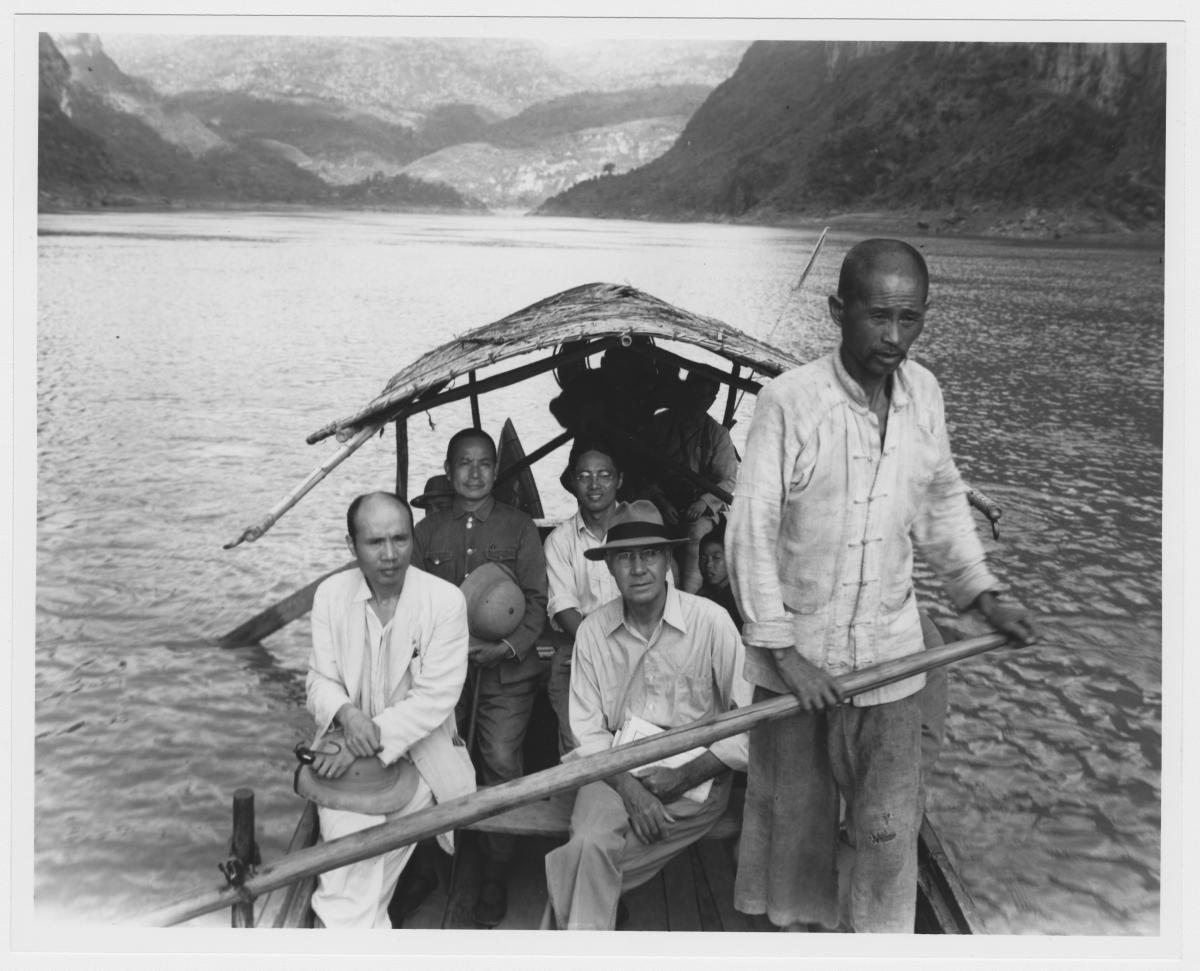
Photograph of Jack Savage on the Yangtze River, 1944
In 1943, the Chinese government invited John L. “Jack” Savage, chief design engineer on the Hoover Dam, to visit the Yangtze River and discuss possibilities for a reclamation project. Savage surveyed the area near the Three Gorges in Central China and drew up a dam proposal for a Yangtze River Project meant to control flooding along the Yangtze River and provide hydroelectric power to support Chinese economic development. Due to the political changes brought by the creation of the People’s Republic of China, American support of the project was withdrawn in 1949, and the project stalled.
This photograph was taken in 1944, during that initial trip to survey the Yangtze River. With Savage are Hong-bin Li, General Qi-wei Wu (Commander of Yangtze Defense Headquarters), and Y.H. Huang. It is part of a number of project records that include engineering designs, artists’ renderings, correspondence, and photographs documenting discussions between the Bureau of Reclamation and the Nationalist Chinese government about potential projects along the river.
Our office is the nationwide repository for records created by the Bureau of Reclamation. Our holdings document projects in the American West, and the Bureau’s contributions to the development of water projects around the world.
View and download this photograph from the National Archives Catalog. This document is one example of the many records held at the National Archives at Denver. You can explore more of our holdings through the National Archives Catalog or by visiting the National Archives at Denver in person. This record is located within Record Group 115: Records of the Bureau of Reclamation, Series: Case Files on the Yangtze Gorge and Three Gorges Dam, China, 1943–1996. Many of the records in this collection have yet to be digitized.
